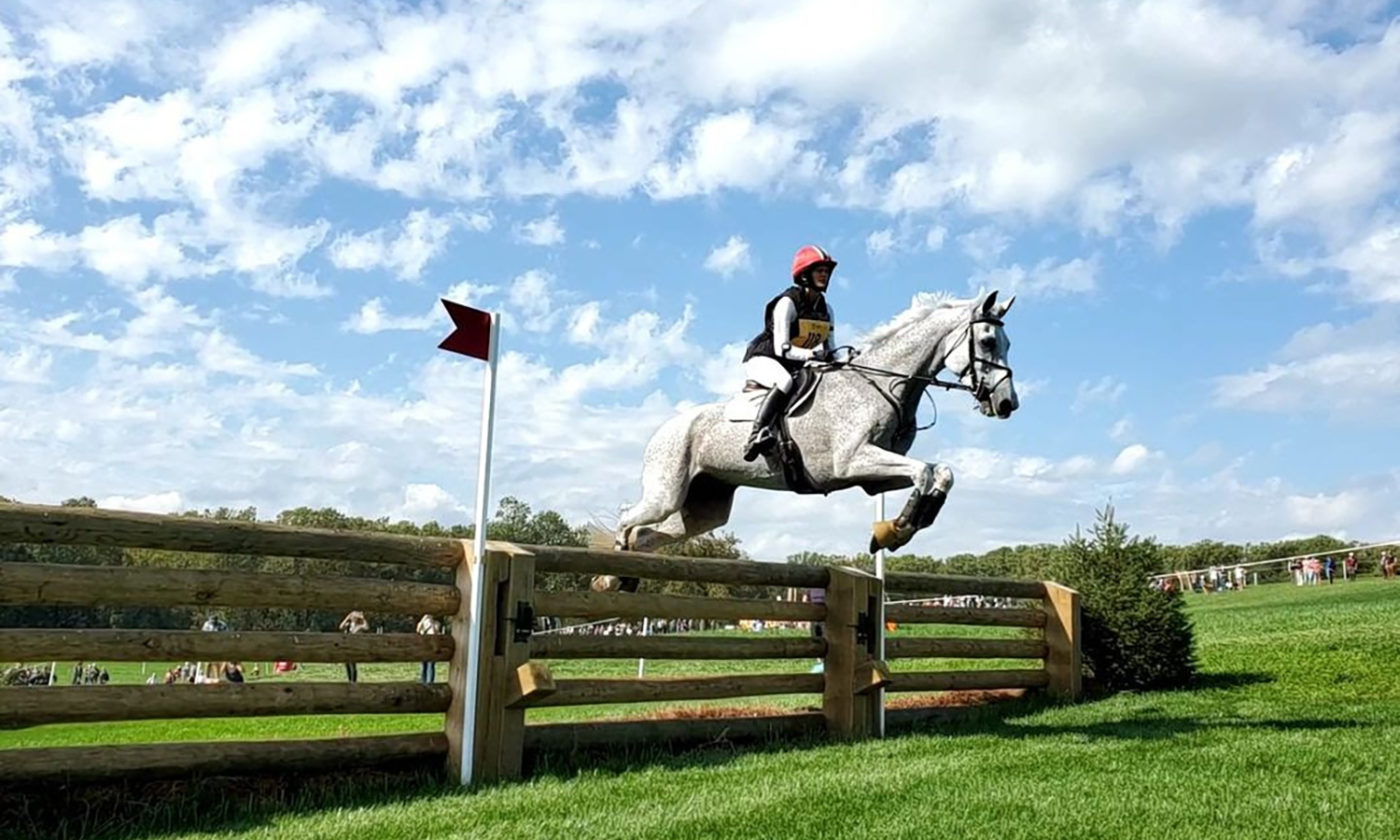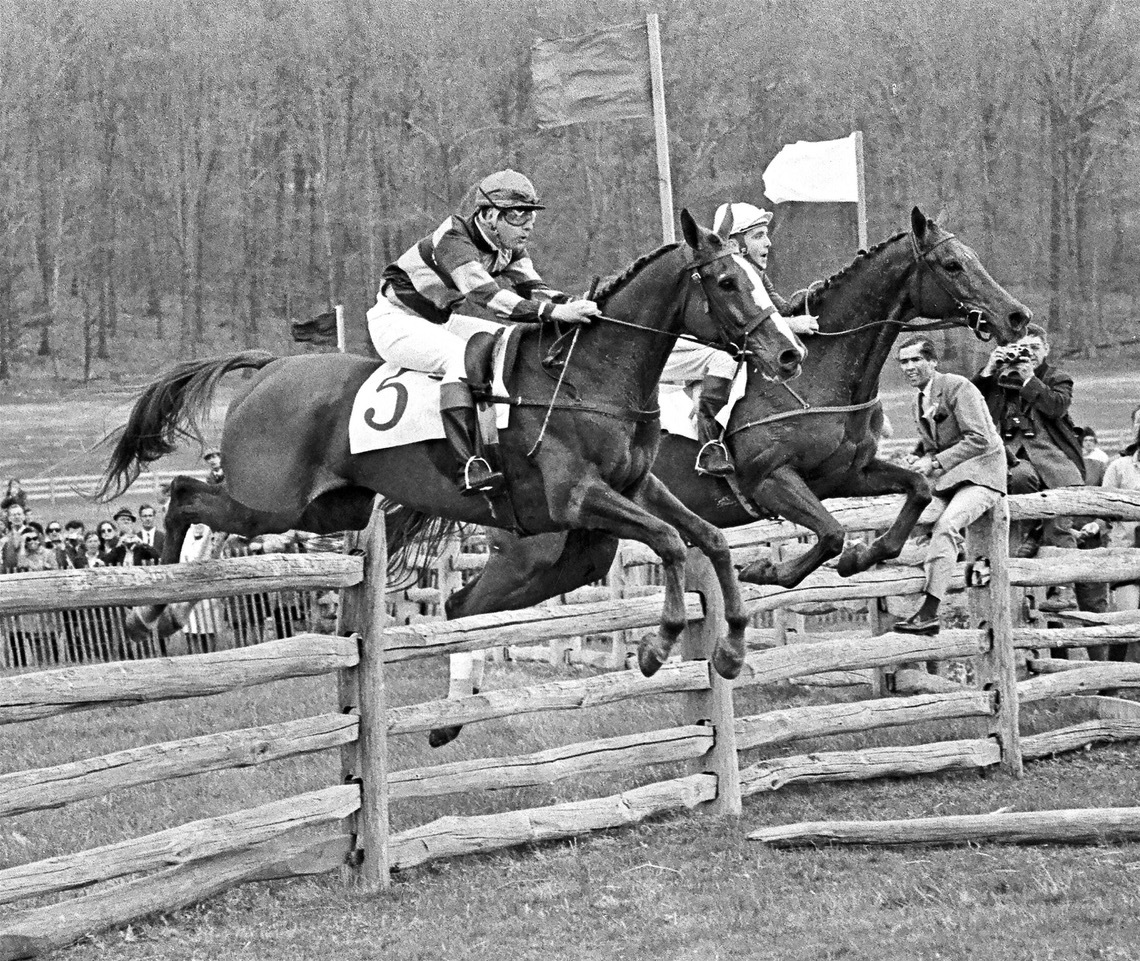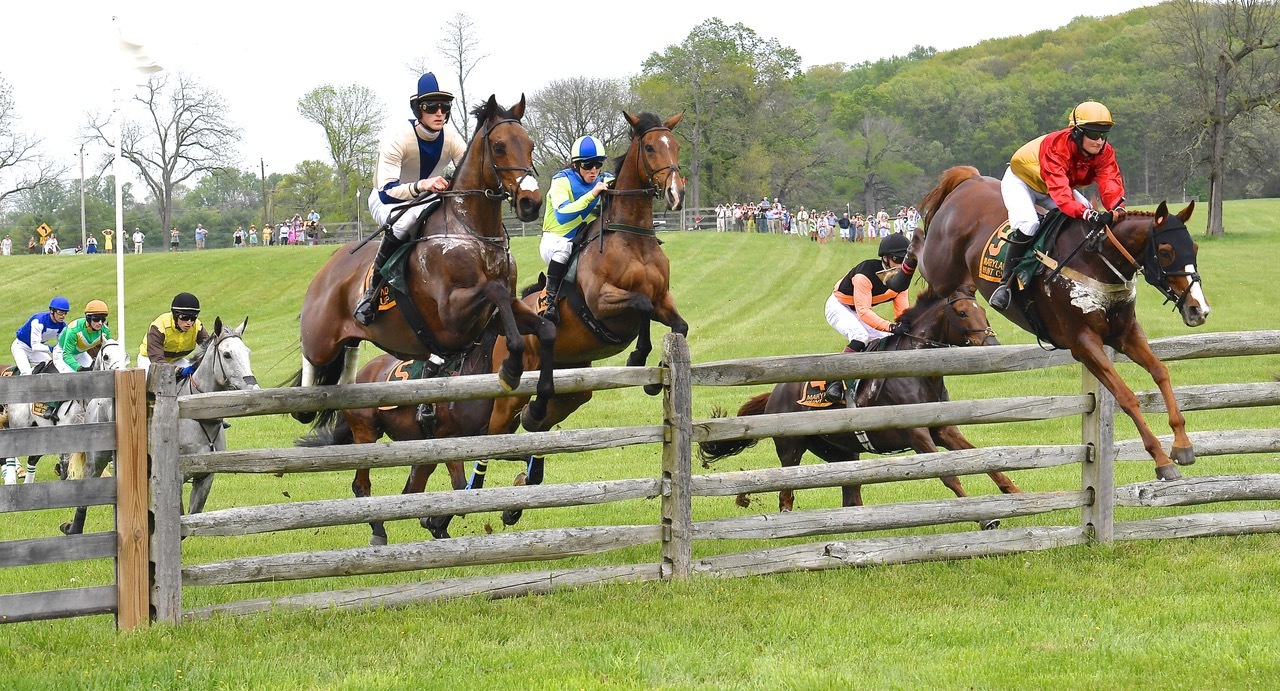

Editor’s note: This article was written before Kevin Freeman’s death on March 10, 2023.
Olympic medalist and steeplechase jockey Kevin Freeman said he had the best of both worlds he occupied simultaneously in the 1960s and ‘70s, explaining that his heart belonged at once to both eventing and jump racing.
“But I loved steeplechase best of all.”
Freeman said that, at surface level, the two bear little resemblance. But dig a little deeper, and there’s a lot the same, with plenty of cross-pollination between the two.
“The common denominator among event riders and race riders comes down to their attitude to riding down to big fences,” said Freeman, now 83. He was on the silver-medal U.S. Olympic three-day event squads in 1972 and 1976, and he was third in the 1971 Maryland Hunt Cup. “You had to love the thrill and challenge of it to be good at either sport.”
Another former jockey-turned-eventer, Danny Warrington agreed with Freeman’s assessment. “To go from one to the other, though,you’ve gotta change your ‘eye’ from running down to a hurdle to setting up for a ‘question.’ Those jump trainers teach you ‘chipping in is a sin.’ You won’t win too many races that way,” he said.
For all of his success in eventing, Freeman still calls steeplechasing “the most thrilling thing I’ve ever done on a horse.”

He’s long retired from the saddle though he stays involved in horses, still teaching a few lessons near his home in Oregon. “There’s nothing more exciting than riding down to a fence with horses on either side of you trying to be the first to the finish line,” he said.
The late Jimmy Wofford, who died Feb. 2, 2023, had praised Freeman as “one of the fastest and smoothest riders” American eventing ever produced.
Freeman was asked to pen the definitive comparison of jump race riding and upper-level eventing in author Bill Steinkraus’s 1976 volume, “U.S. Equestrian Team Book of Riding."
He was born in Portland, Oregon, growing up on a farm in nearby Molalla. He’d learned to love horses and riding when he was young, starting the way many young boys start in equestrian.
“I discovered that the riding academy my sister rode at had a lot of attractive young ladies,” Freeman said with a chuckle at the memory. "That's why I started."
His equestrian education started on the show circuit, competing in hunters and equitation on the West Coast, then Cast Coast. He played polo while studying agricultural engineering at Cornell University in New York.
Freeman pursued a graduate degree at the Wharton School at the University of Pennsylvania.
His short steeplechase career had him winning over hurdles and over timber, his biggest win coming in the 1968 Iroquois with Bill Rochester’s Appollon. He won over the Pennsylvania Hunt Cup course with Jill Slater’s Stutter Start and finished third in the 1971 Maryland Hunt Cup with Morning Mac, behind timber legends Landing Party and Haffaday.
In his other world, Freeman was on three Olympic silver medal three-day event squads—1964, 1968 and 1972.
Freeman was inducted into the Oregon Sports Hall of Fame in 1991 and into the U.S. Eventing Association Hall of Fame in 2009.
He’s happy to reminisce about the good old days straddling the steeplechase and eventing worlds. There are comparisons, but there are distinct differences.
“For all their similarities, the two sports really are different,” Freeman says. “Eventing is technically a more difficult jumping sequence than steeplechase, but you’re racing against the clock, not against other horses.
“I bet Morning Mac would have made a good show hunter—he moved real well, but [Iroquois winner] Appollon is the one I bet would have been a good event horse if he’d gotten that chance. Stutter Start? He’d sometimes hang a leg. I don’t believe I’d want to ride him over a solid course [of cross-country event fences.]”
Warrington grew up with a foot in each world, the flat track and eventing, with 'chasing in the mix, near Fair Hill, Maryland. He rode with the Unicorn Pony Club and Lana duPont Wright. He started foxhunting on the line with his father at age 5 with the Lewisville Hunt.
Warrington says he “tolerated” dressage to be allowed to ride the elementary level cross-country courses of his youth.
He traded it for the racetrack at 14, working on the Delaware Park backstretch for Gene Weymouth, later riding over jumps for Hall of Famers Jonathan Sheppard, Janet Elliot, and more.
He retired from racing in 1997 following the death of his wife, Amanda Pirie Warrington, from a fall in the advanced division at theFair Hill (Elkton Maryland) horse trials.
"I pretty much checked out of everything,” Warrington said. “Didn’t touch a horse for five years.” Warrington focused his energies on obtaining his Coast Guard captain’s license, teaching scuba diving, skiing, and fishing.
One day, predictably, horses came back in his life. A friend invited him to take a ride. “One jump and it all came back,” he said.
Warrington mounted a brief steeplechase comeback, riding a few races in 2002 and 2003, but he’d gained newfound appreciation for the importance of dressage as fundamental to any horse’s education, and he pursued eventing. Warrington has competed to the four-star level and has trained several horses to the championship level.
“I call myself the accidental eventer,” Warrington said. “I’ve gotten a lot of event horses that started out on the racetrack or came from the jump race world. Somebody would call me with a ‘chaser they wanted to sell, saying, ‘it’s a little too careful’ to make it running over jumps. But that’s just the type you want. Careful.
“I still remember something [Hall of Fame trainer] Burley Cocks said when I asked him how he taught all those horses to brush through the hurdles. He told me, ‘You go ‘til you go fast enough that they make a mistake.’ [Steeplechase national fence] hurdles are forgiving—the faster you jump, the more you win. Event fences not so much. You want a horse that’s a little careful. Bold, but careful.”
Same with riders, Warrington maintained. “What [riding steeplechase races] gave me was the seat and the balance to let a horse find his way out of trouble.”
He had to retrain his eye, though, and change his mindset.
“I remember one day schooling at Bruce Davidson’s. He’d set up an oxer, four strides to another oxer. I’d jump in, every time, and go down the line in three. Every time. Bruce pretty much had to grab me by my bootstrings [to make me] learn not to leave out that stride.The upper level event horses, you come around a blind corner to an offset angle down a steep hill, you’ve gotta be able to adjust your stride, like an accordion. You want the horse to be thinking, to wait for the stride to come to you.”
Warrington and wife Keli Warrington created the LandSafe training method to teach riders to fall, a tuck and roll movement designed to push the rider away from a rotational fall. Their clinics are aimed at event riders, but the system works for any discipline, including racing.

Jennie Saville began working with steeplechase owners, Thoroughbred breeders, and longtime eventing supporters Tim and Nina Gardner while she was a young rider. Saville won team and individual gold in the 2008 FEI North American Junior and Young Rider Championship (Parker, Colorado), then worked for Olympic champion Phillip Dutton at his True Prospect, partnering with Dutton on many Gardner homebreds and young stock at their Welcome Here Farm in West Grove, Pennsylvania.
She campaigned two-time USEA horse of the year Cambalda, and more recently notched a big CCI4*-L win at Bromont (Quebec, Canada) in June 2022 with third-generation Gardner homebred, Twilightslastgleam. This spring, she finished two horses, Twilightslastgleam and FE Lifestyle, in the top 20 at the Land Rover Kentucky Three-Day Event.
Saville won over timber at the Brandywine point-to-point in 2017 with Joshua G. for owner Armata Stable and trainer Kathy Neilson. Joshua G. and Saville fell at the sixth while going strongly in the 2017 Maryland Hunt Cup.
She grew up near Chicago—nowhere near any steeplechasing, but Saville once said in an interview that “if I had known what this was when I was younger, I’d probably have become a jump jockey not an event rider. People have said the time I’ve spent riding racehorses has helped me. I think I’ve gotten a lot better. I’ve ridden a lot of [speed work for flat trainer Michael Matz and others] and feel very comfortable at speed now.
Are you following along with the action from home this weekend? Or maybe you're competing at an event and need information fast. Either way, we’ve got you covered! Check out the USEA’s Weekend Quick Links for links to information including the prize list, ride times, live scores, and more for all the events running this weekend.
Last month, readers met VIP Volunteer Rebecca Proetto, who volunteered at the MARS Maryland 5 Star horse inspection. This month, the focus turns to husband and wife Ed and Leanne Barnett who introduced Proetto to the art of running an efficient horse inspection at Maryland. Ed and Leanne undertake a 12-hour drive from their home in Indiana to Maryland just to volunteer at the event.
The USEA is saddened to share the passing of Sara Kozumplik’s five-star partner As You Like It at the age of 34. The gelding died in his sleep at his retirement home at Kozumplik's parents' residence.
The 2024 USEA Emerging Athletes U21 (EA21) National Camp is just a little over a month away and all over the country, young riders are preparing for their trip to Ocala, Florida, to participate in this year's prestigious week-long academy led by U.S. eventing legend David O'Connor. This year's camp takes place Dec. 31, 2024, through Jan. 4, 2025, and will feature classroom sessions, guest lecturers, and in the saddle work as a group to help strengthen the foundation of each rider selected to participate.